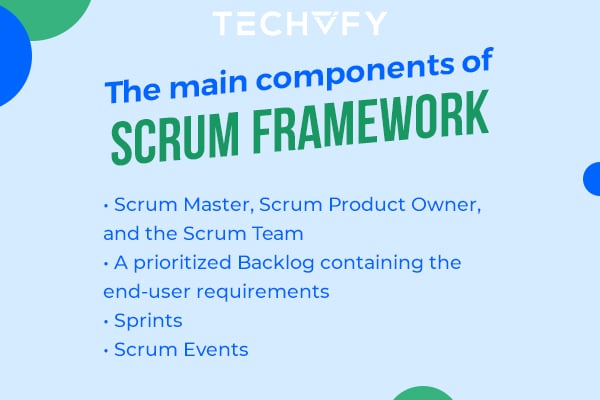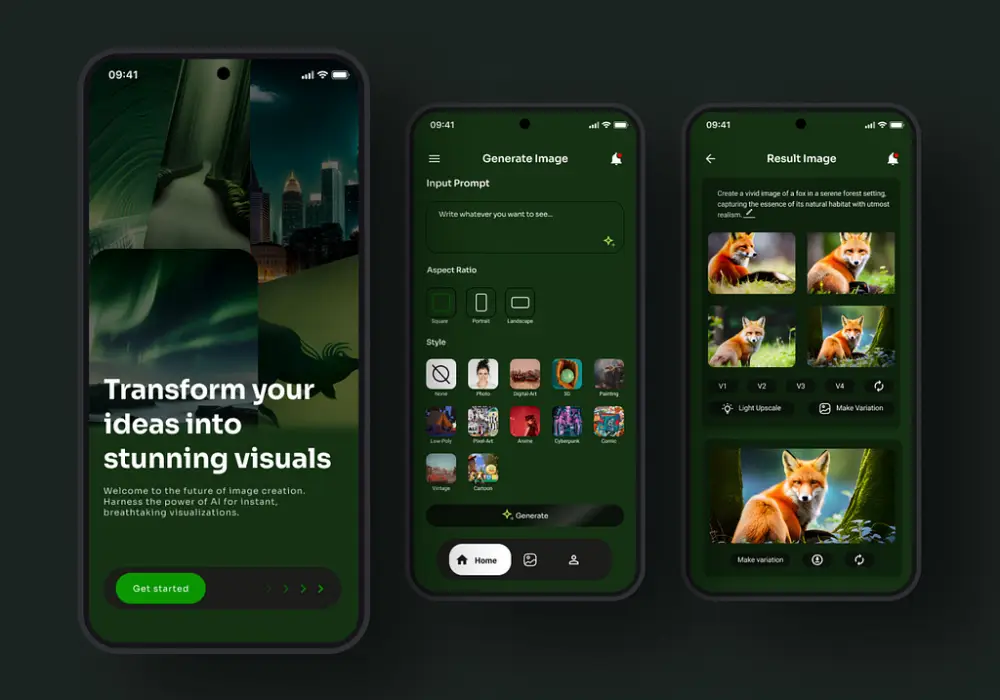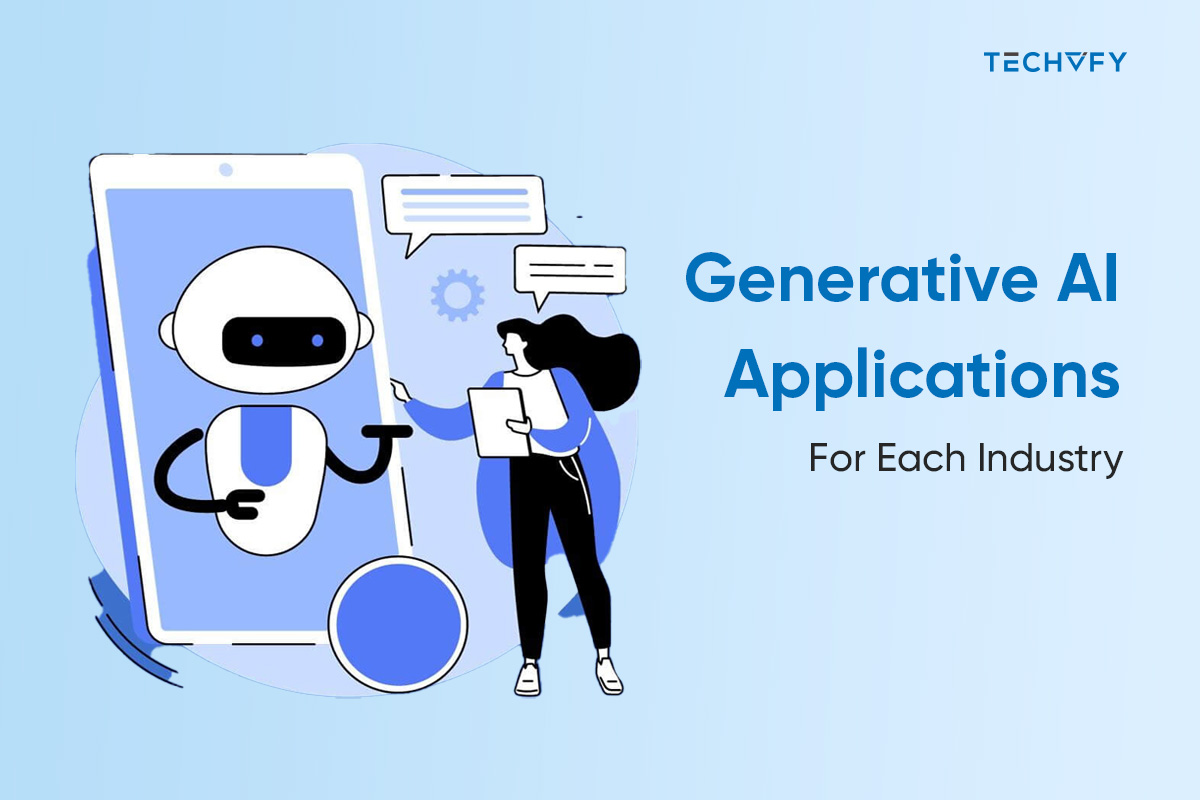Scrum Development Process in Offshore Software Development


There are many Agile methodologies to choose from when conducting a software development project: Kanban, Lean, Six Sigma, Scrum, etc. But what are those methods in detail, and what are the differences between each one?
In this article, TECHVIFY Software would like to introduce to you the scrum development process in offshore software development.
Scrum is an Agile project management methodology that allows for rapid development and testing. This software development method is significantly suitable for a small team.
As an implementation of Agile, the Scrum development process breaks down a large software project into smaller, more manageable tasks. By doing so, the Scrum method allows clients to review each part of the project individually. In this way, it offers a more flexible approach to software development.
Scrum methodology is an ideal project management framework in software development that applies to any project with aggressive deadlines, complex requirements, and a degree of uniqueness.
In Scrum, projects move forward via a series of iterations called sprints. Each sprint is typically two to four weeks long.
By emphasizing productivity, focus, and collaboration, Scrum teams build high-quality deliverables quickly and can more easily adapt to change.
Learn more:
The key components of Scrum framework are:

Scrum Master: The Scrum Master is the one who’s responsible for the team’s performance by helping them use the Scrum process flow, removing impediments to progress, protecting the team from outside, and so on.
Product owner: The product owner is the project’s key stakeholder. A product owner usually is someone from product management or marketing, a key stakeholder or a key user, who will represent users, customers, and others in the process.
Scrum team: A typical Scrum team has between five and nine people. Everyone on the project is empowered to complete the work they have committed within the 2-4 weeks of a sprint.
Product backlog: The product backlog is a prioritized features list containing every desired feature or change to the product.
Sprint planning meeting: At the start of each sprint, a sprint planning meeting is held to determine the timeline. The WHAT Meeting focuses on the scope of a Sprint, whereas the HOW Meeting focuses on how this scope will be implemented.
Daily Scrum: Daily Scrum is a brief meeting that helps set the context for each day’s work and ensures the team stays on track. All team members are required to attend the daily scrum.
Sprint review meeting: At the end of each sprint, the team demonstrates the completed functionality at a sprint review meeting, during which the team shows what they accomplished during the sprint.
Sprint retrospective: This is a meeting at the end of each sprint, during which the team reflects on how well Scrum is working for them and what changes they may wish to make for it to work even better.
When a customer comes to the offshore development team for a software project, based on their requirements, the final product is broken up into individuals to prepare for the Scrum offshore development. The pieces are prioritized and tackled into sprints.
The Scrum team can determine their own sprint length, as long as it’s less than 4 weeks, usually one to two weeks. At the start of each sprint, the team selects some work from the product backlog and commits to completing that work during the sprint.
At the end of each sprint, the team produces a potentially shippable product increment. Transparency is a key principle in Scrum, so teams and stakeholders review the results of each sprint together in Daily Scrum.
During these 15-minute meetings, people will report what they accomplished yesterday and what they plan to work on that day and discuss their progress and any impediments to completing the work for that sprint.
Daily Scrum ensures everyone’s on the same page about priorities and deliverables, and any adjustments can be made immediately.
Scrum offshore software development methodology is most suitable for small projects. Selecting a compatible method can save business owners loads of money and time. Knowing how a Scrum process works allows businesses to make better choices when working on an offshoring project.

If you have ideas that need custom software development services, do not hesitate to contact TECHVIFY Software. We are a leading offshore development center in Vietnam capable of consulting and offering the best Agile software outsourcing perfectly tailored to your requirements.


Table of ContentsI. What is Scrum?II. What is Scrum development process?III. How does Scrum work in offshore software development?Conclusion The healthcare industry has seen significant changes by adopting new tools and technologies. Machine learning (ML) is now essential for improving care and efficiently managing patient data. Well-performing machine learning (ML) models can enhance healthcare by increasing efficiency and accelerating decision-making. These models offer insights from historical data like diseases, family history, and genetic disorders. The first steps in creating healthcare ML models involve identifying the problem and defining the prediction task. This article will help you choose the necessary requirements, developing…
25 April, 2024

Table of ContentsI. What is Scrum?II. What is Scrum development process?III. How does Scrum work in offshore software development?Conclusion Have you ever wondered about the technology behind AI-generated movie scripts or how companies predict consumer behavior? Welcome to the dual domains of Generative AI and Predictive AI. Generative AI can surprise us by crafting original content that ranges from poetry to prototypes, whereas Predictive AI allows businesses and governments to forecast outcomes with unprecedented accuracy, using patterns derived from existing data. As we explore the contrasts and capabilities of Generative AI vs Predictive AI, we’ll uncover how these technologies are…
25 April, 2024

Table of ContentsI. What is Scrum?II. What is Scrum development process?III. How does Scrum work in offshore software development?Conclusion Welcome to the dynamic world of generative AI, a frontier of technology where machines don’t just perform tasks but also create and innovate. As this technology reshapes industries and redefines creativity, its applications span from generating lifelike images and composing music to sophisticated predictive modeling and intelligent automation. In this article, we’ll explore the diverse applications of generative AI, spotlighting key innovations and discussing the opportunities and challenges they bring. Whether you’re deeply embedded in the tech world or simply curious…
25 April, 2024


Thank you for your interest in TECHVIFY Software.
Speed-up your projects with high skilled software engineers and developers.
By clicking the Submit button, I confirm that I have read and agree to our Privacy Policy